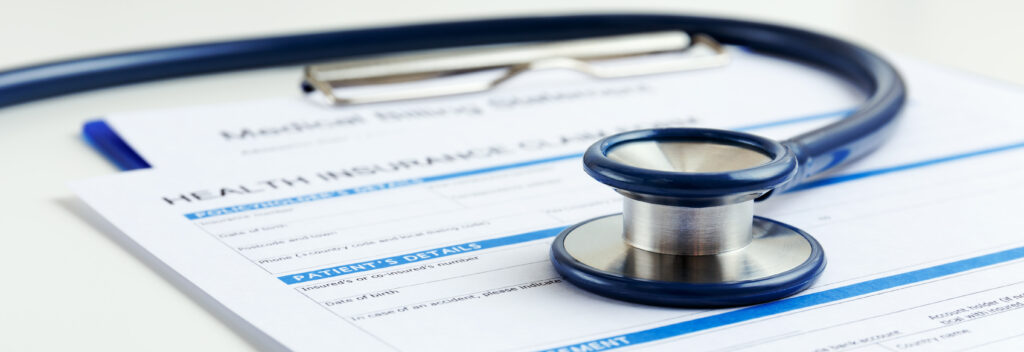
Some stroke risk factors are genetic, true, but we’ll help you discover which factors you can control—and how to make healthier lifestyle choices to reduce your risk.
While we tend to focus more on heart attacks when we think about cardiovascular disease, strokes are actually a serious and quite common health concern, too. Stroke is the fifth leading cause of death in the U.S., according to the American Heart Association (AHA). (It ranks just after heart disease, cancer, accidents, and lower respiratory diseases, the U.S. Centers for Disease Control and Prevention (CDC) explains, and tops Alzheimer’s disease, diabetes, kidney disease, influenza, and suicide.)
A stroke happens when a blood vessel delivering nutrients and oxygen to the brain becomes blocked by a blood clot or bursts. The brain is then starved of oxygen, and the longer this severe injury goes untreated, the more brain cells die.
“Stroke is a leading cause of death and disability. Primary and secondary prevention are important to decreasing this number,” says Matthew Starr, M.D., interim director of the UPMC Stroke Institute in Pittsburgh, Pennsylvania.
That “prevention” part is what we’re here to study today. While 5 of the AHA’s stroke risk factors are out of our control—age, family history, gender, race, and prior stroke or heart attack—there are 8 stroke risk factors that are related to lifestyle habits that we can adjust. Plus, there are another 6 risk factors that the jury is still out about, but will likely fall under that umbrella of risk factors we can control.
This is why the AHA estimates that about 80% of strokes are likely preventable, meaning they’re related to “risk factors are under our control and can be modified,” Dr. Starr explains.
8 Things That Make You More Likely to Have a Stroke
1. You smoke.
Nicotine and carbon dioxide in smoke can damage the cardiovascular system, the AHA says. Current smokers are at 2 ½ times higher risk for having a stroke compared to those who have never lit up, according to a 2020 study published in the Journal of the American Heart Association. This stroke risk factor is strongest for those who smoke the most; those who use one to 12 cigarettes per day had a 2.3 times higher risk, while individuals who smoked more than 12 cigarettes per day had a 2.8 times higher risk.
2. You have diabetes.
Both type 1 and type 2 diabetes increase risk of stroke, the AHA confirms. Learn more about the difference between type 1 and type 2, plus learn more about how to work with your medical care team to manage them and live healthily with each.
3. You eat an unhealthy diet.
The standard American diet typically includes too many processed foods and too few fruits and vegetables. “Diets low in salt, saturated fats, and sugary foods help reduce stroke risk,” says Amanda Ganem, M.D., a cardiologist at Westmed Medical Group in White Plains, New York. In general, an eating strategy similar to the blood pressure-minded, low-sodium DASH diet and the heart-healthy Mediterranean diet tend to reduce stroke risk as well.
4. You don’t get enough exercise.
Along with diet, this is one stroke risk factor that is linked to several other risk factors—not racking up the recommended 150 minutes of moderate physical activity per week can increase the risk for stroke, heart disease, high blood pressure, high cholesterol, diabetes, and obesity. Walking is a stellar place to start since muscle-building moves are also important.
5. You qualify as obese.
Extra body weight may speed up the rate at which the brain ages, the AHA says, and is also related to risk for stroke (plus heart disease, diabetes, and high blood pressure). Losing 5 to 10 pounds can significantly reduce risk, they add.
6. You have been diagnosed with high blood cholesterol.
Extra cholesterol in the blood can accumulate into clots—the exact cause of many strokes. A low HDL (AKA “good” cholesterol) might increase stroke risk for men as well, the AHA says.
7. You’re not keeping tabs on your already-diagnosed arterial or heart disease.
Carotid artery disease (narrowing in the artery that connects the neck and brain), peripheral artery disease (narrowing of blood vessels that connect leg and arm muscles), atrial fibrillation (a heart rhythm disorder), coronary heart disease and heart failure diagnoses are all risk factors for stroke. Work with your medical care team to monitor, manage and treat these conditions to reduce complications, the AHA advises.
8. You’re undertreating your sickle cell anemia.
This genetic disorder causes the body to generate “sickled” red blood cells. Their unique shape makes them “stickier” to blood vessel walls, which can potentially lead to blocked arteries that trigger a stroke. Since this is genetic, the only reason this lands on the “stroke risk factors you can control” list is that proper maintenance can reduce the risk for many complications—including stroke. So again, keep in touch with your doctor to monitor, manage and treat this condition.
6 Things That Might Make You More Likely to Have a Stroke
The medical research community is still gathering more evidence, but the general consensus is that these details might also increase stroke risk:
- History of testing positive for COVID-19. This may spike blood clot risk later in life, but more research is needed to clarify this relationship.
- Geographic location. Southeastern states are deemed part of the “stroke belt” due to the higher rates of strokes.
- Sleep habits. Humans who don’t score enough R&R—which is about one in three Americans—typically have a higher risk for all heart diseases and stroke. Sleep apnea, or when one’s body stops breathing several times throughout the night, raises stroke risk substantially as well.
- Socioeconomic factors. Having a low income is linked to—although certainly not the direct cause of—a stroke. This is likely due to access to quality health care or related cost coverage, and/or related to higher rates of smoking and obesity.
- Alcohol abuse. Women who drink more than 1 drink per day and men who drink more than 2 drinks per day (here’s what is considered a single standard drink, per the National Institute on Alcohol Abuse and Alcoholism) are at heightened risk.
- Drug abuse. Heroin, cocaine, and amphetamine use in particular can relate to increased stroke risk.
The Bottom Line
“The top 5 things to monitor or treat to reduce the risk of stroke are blood pressure, tobacco use, diabetes, diet, and physical activity, with blood pressure being the very most vital. These require the individual to make decisions and to monitor their own health and activities,” Dr. Starr says. And while that can sound a bit daunting, “these give patients some control over their situation and also decrease stroke risk.”
If several of these stroke risk factors resonate with you, your doctor, a dietitian and other medical professionals can help, Dr. Ganem adds.
“People should visit their physician at least once a year to check their blood pressure and blood work to look for these potential medical problems. As appropriate, an electrocardiogram or ECG can be performed to look for heartbeat issues, such as atrial fibrillation which have been associated with the risk for stroke. Referrals to a cardiologist may also be appropriate depending on a person’s overall risk,” she says.
___________________________________________
Get the Insurance You Need and Save Today!

